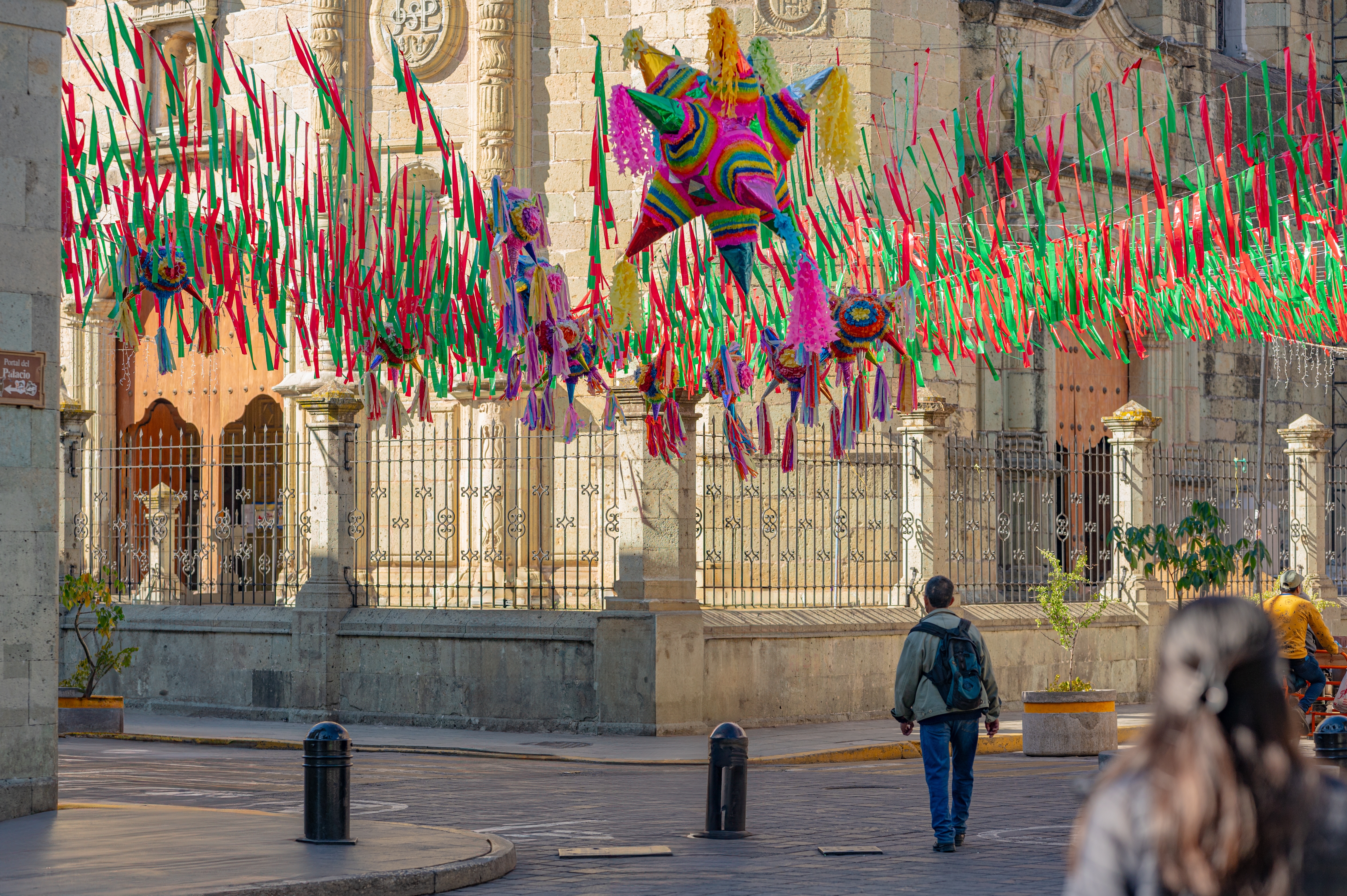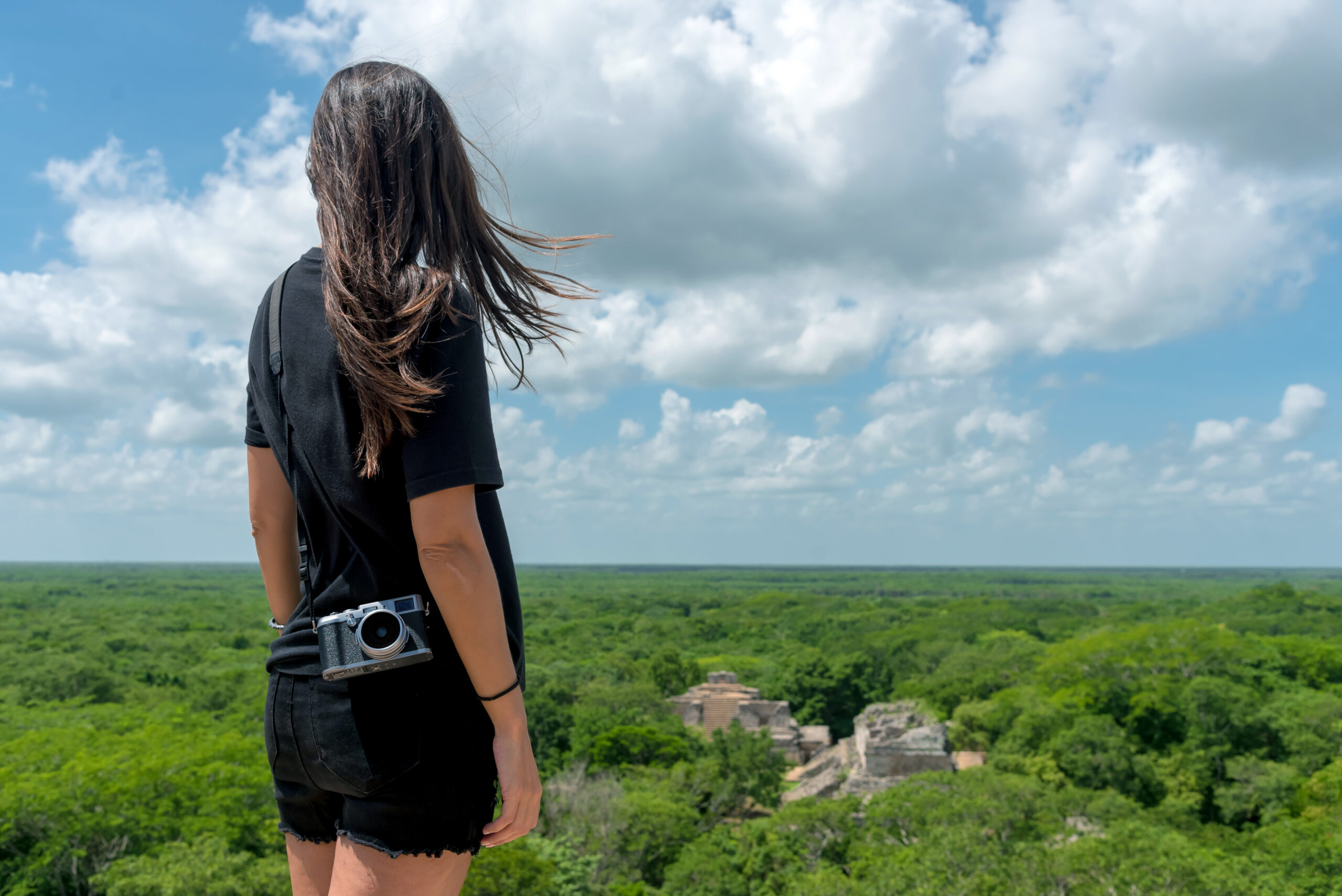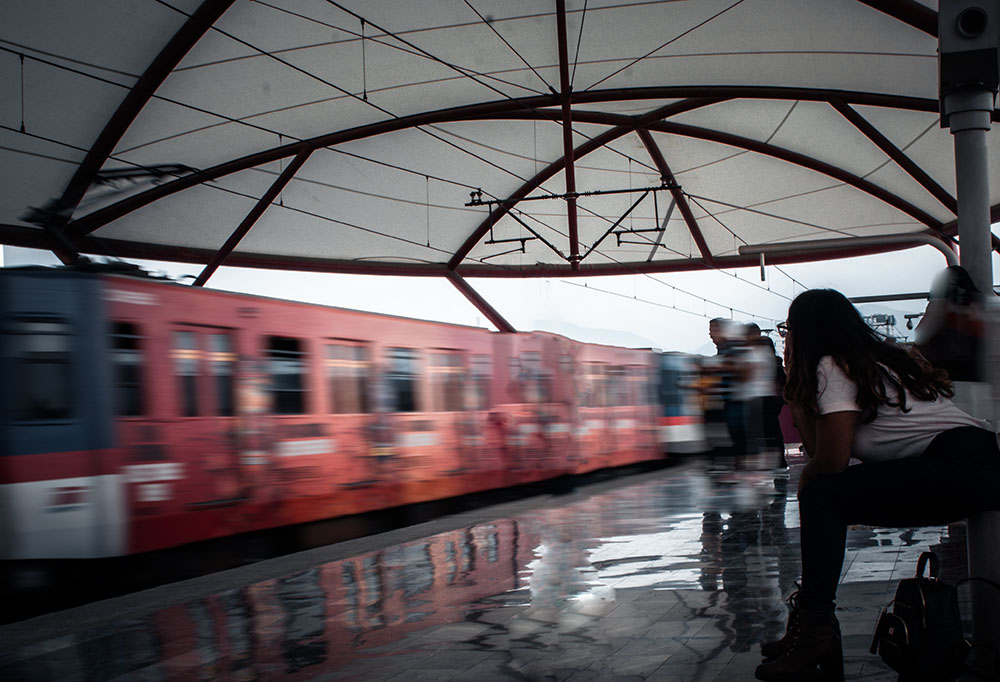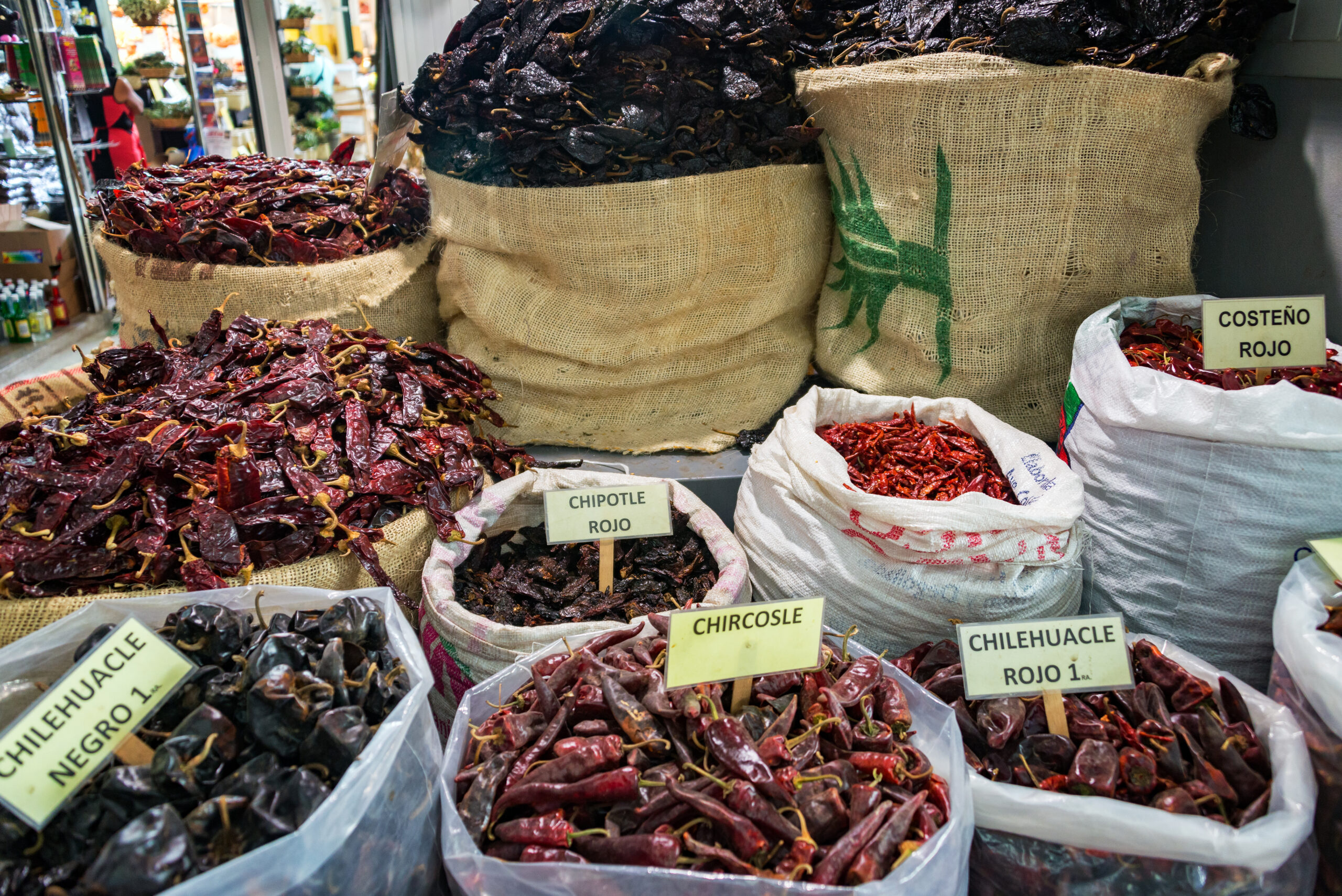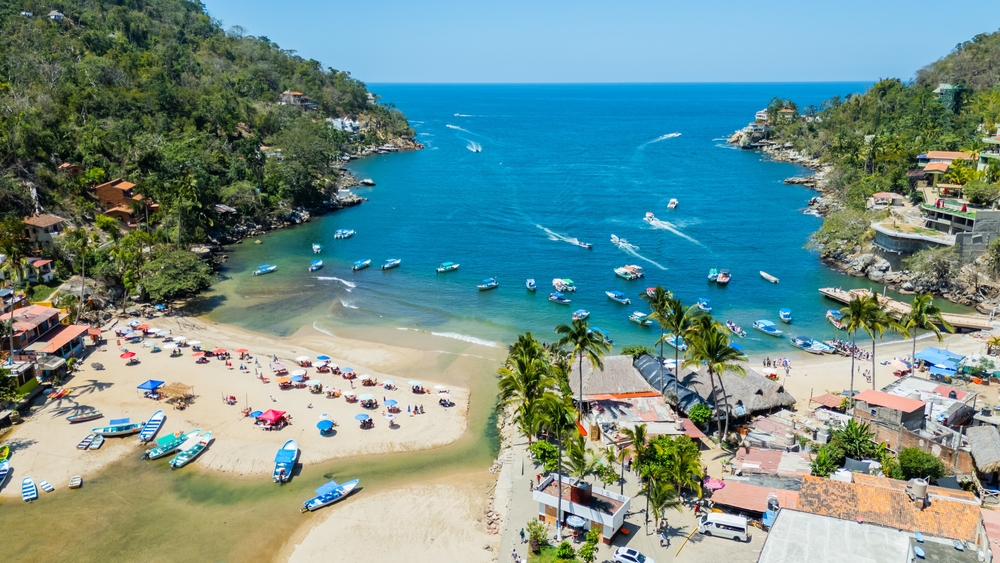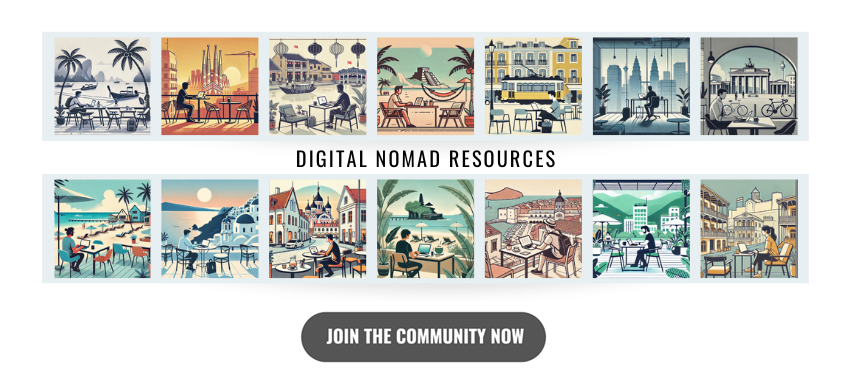Mexico has established itself as one of the world’s premier destinations for digital nomads, offering an unbeatable combination of affordability, accessibility, rich culture, and diverse landscapes. From colonial mountain towns to Caribbean beaches and modern urban centers, Mexico provides varied environments for location-independent professionals seeking exceptional value without compromising on lifestyle quality or connectivity.
Mexico’s Visa Options for Digital Nomads
While Mexico doesn’t offer a specific “Digital Nomad Visa” by name, it provides several straightforward visa options that effectively serve remote workers.
Temporary Resident Visa (Visa de Residencia Temporal)
This is the most popular option for digital nomads planning longer stays:
- Duration: 1-4 years (typically issued for 1 year initially, renewable for 3 more)
- Income Requirement: Approximately $2,700/month or $45,000 in bank statements for the previous 12 months
- Application Process: Must begin at Mexican consulate in your home country
- Processing Time: Typically 2-10 business days
- Application Fee: Approximately $40-60 USD (varies by consulate)
- Work Restrictions: Cannot work for Mexican companies without additional permit, but remote work for foreign employers/clients is permitted
- Benefits: Multiple entries and exits, path to permanent residency, access to national healthcare system (IMSS), ability to open bank accounts, legal right to remain beyond tourist limits
- Family Inclusion: Dependents can be included
- Official Website: Mexican Immigration Institute
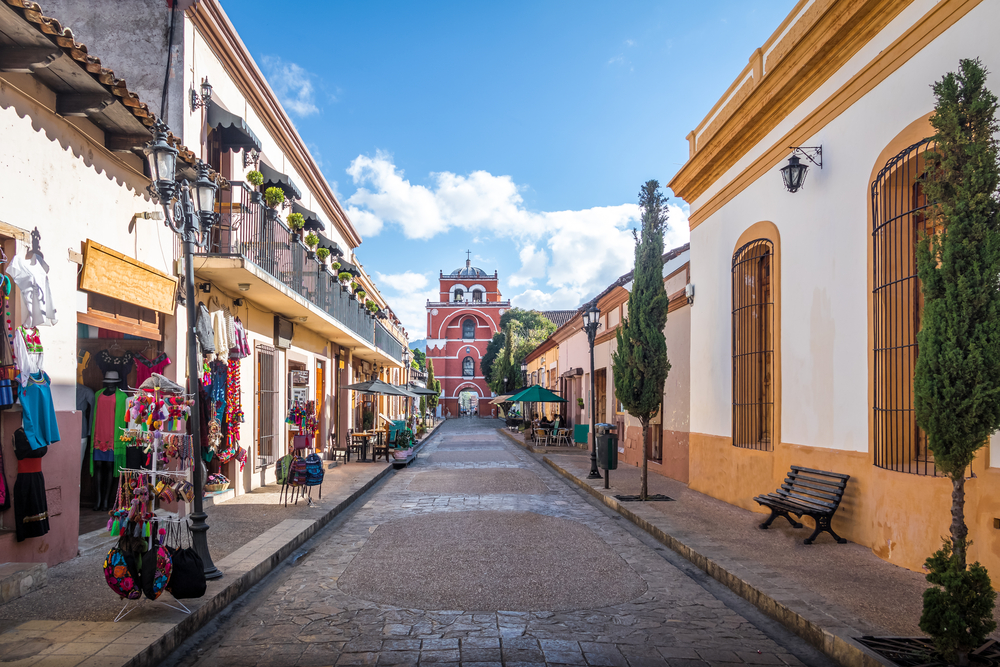
Tourist Visa (FMM – Forma Migratoria Múltiple)
Many digital nomads start with this option before transitioning to temporary residency:
- Duration: Up to 180 days (at immigration officer’s discretion)
- Requirements: Valid passport, return ticket (rarely checked)
- Application: Completed upon arrival or online before travel
- Cost: Approximately $35 USD (included in most airline tickets)
- Limitations: No work permit (though enforcement for remote work is virtually non-existent), must leave after 180 days, limited access to banking/financial services
- Extension: Not officially possible within Mexico; requires leaving and returning
Permanent Resident Visa
For those planning very long-term stays:
- Duration: Indefinite
- Eligibility: Typically after 4 years as temporary resident, though some nationalities may qualify directly
- Benefits: No need to renew, ability to work legally in Mexico, path to citizenship after 5 years
- Financial Requirements: Higher than temporary residency, or family connections to Mexican citizens
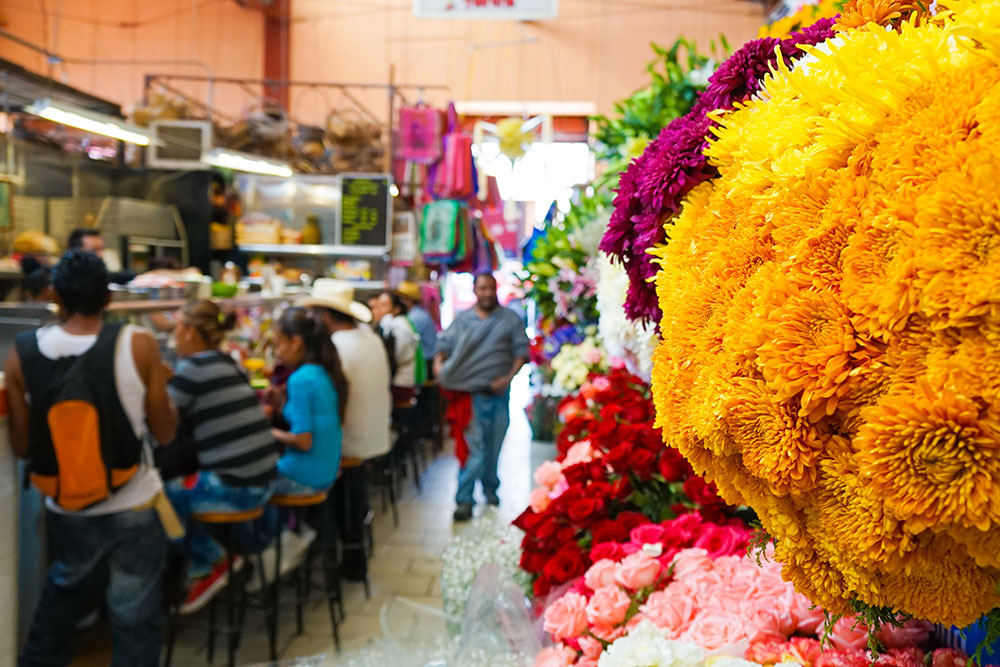
Why Choose Mexico as a Digital Nomad
Mexico offers numerous compelling advantages that have made it consistently popular among digital professionals:
- Affordability: Exceptional value with comfortable living from $1,000-2,000/month in most areas
- Geographical Diversity: Beaches, mountains, jungles, deserts, and urban centers
- Climate Options: Everything from tropical coastlines to eternal spring in highland cities
- Connectivity: Rapidly improving internet infrastructure throughout popular areas
- Established Expat Scene: Large digital nomad communities in multiple cities
- Proximity to US/Canada: Short, affordable flights and compatible time zones
- Rich Culture: Ancient traditions, colonial history, vibrant arts, and world-renowned cuisine
- Healthcare Quality: Excellent affordable medical and dental care
- Warm Hospitality: Famous Mexican friendliness and welcoming attitude
- Natural Beauty: Stunning landscapes from Baja California to the Yucatán Peninsula
- Architectural Charm: Colonial cities with colorful streets and historic buildings
- Safety: While certain regions have concerns, popular digital nomad destinations are generally secure
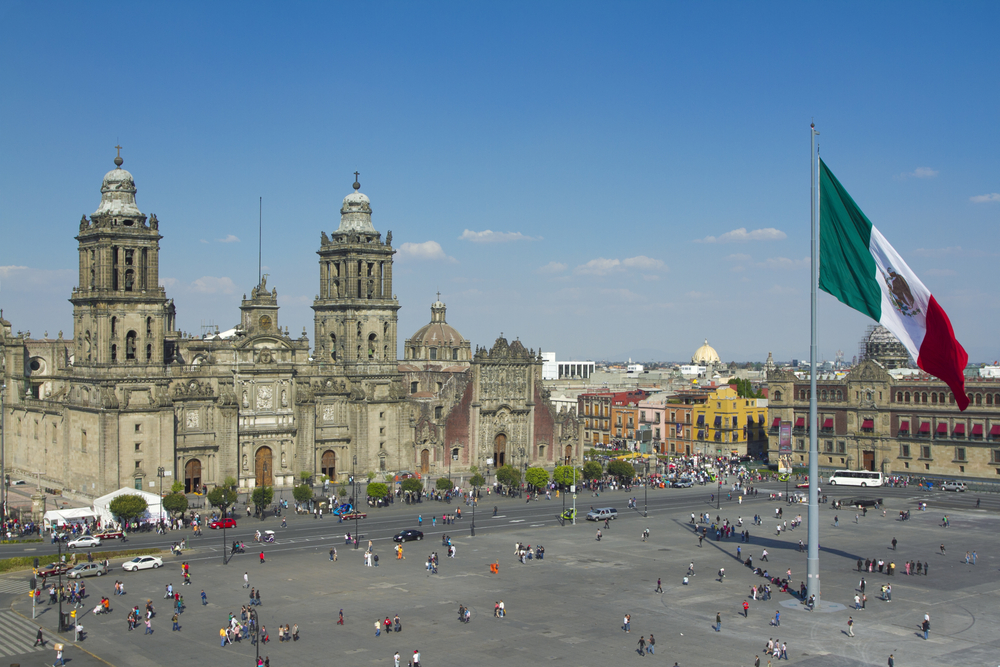
Top Cities for Digital Nomads in Mexico
Mexico City: The Cosmopolitan Hub
North America’s largest city offers an urban experience like no other:
- Digital Scene: Thriving startup ecosystem and tech community
- Cultural Immersion: World-class museums, galleries, and historical sites
- Neighborhood Diversity: From trendy Roma/Condesa to historic Centro
- Coworking Density: Highest concentration of spaces in Latin America
- Gastronomy: One of the world’s premier culinary destinations
- Connectivity: Excellent digital infrastructure with fiber options
- Living Costs: Moderate by Mexican standards (~$1,200-2,000/month)
- Transportation: Comprehensive metro system and affordable rideshare
- International Community: Large expat population and diverse influences
- Climate Advantage: Mild year-round temperatures due to elevation (7,350 ft)
- Drawbacks: Air pollution, traffic congestion, size can be overwhelming
Popular digital nomad neighborhoods include Roma Norte (trendy, central), Condesa (leafy, hip), Juárez (emerging, accessible), and Polanco (upscale, international).
Puerto Vallarta: The Beach City with Infrastructure
This Pacific coast destination combines beach lifestyle with solid amenities:
- Beach Access: Beautiful Banderas Bay with multiple beach options
- Established Expat Scene: Large international community
- Digital Infrastructure: Reliable internet throughout the city
- Coworking Options: Growing number of spaces catering to remote workers
- Walkable Zones: Compact areas with essentials in walking distance
- LGBTQ+ Friendly: One of Mexico’s most inclusive cities
- Natural Setting: Jungle-covered mountains meet ocean
- Living Costs: Moderate (~$1,200-1,800/month)
- Healthcare: Excellent medical facilities with English-speaking providers
- Climate: Tropical with distinct dry (November-May) and rainy (June-October) seasons
- Drawbacks: Tourist influence, summer heat/humidity, higher costs than inland Mexico
Popular areas include Zona Romántica (walkable, lively), 5 de Diciembre (local feel, affordable), and Fluvial/Versalles (modern, residential).
Playa del Carmen: The Caribbean Digital Hub
Located on the Riviera Maya, this once-small fishing village is now a digital nomad hotspot:
- Caribbean Setting: Stunning turquoise waters and white sand beaches
- Digital Nomad Infrastructure: Numerous coworking spaces and nomad-friendly cafes
- Walkable Design: Compact center with pedestrian-friendly layout
- International Atmosphere: Diverse expat community from around the world
- Connectivity: Good internet options in central areas
- Strategic Location: Access to Tulum, Cancún, and cenotes
- Living Costs: Higher than average for Mexico (~$1,500-2,500/month)
- Transportation: Easy access to Cancún International Airport
- Nightlife: Active social scene with numerous restaurants and bars
- Weather: Tropical climate with hot, humid summers and warm winters
- Drawbacks: Tourist pricing, increasing costs, periodic seaweed issues (sargassum)
Popular areas include Centro (heart of the action), Playacar (upscale, quieter), and north of downtown (residential, developing).
San Miguel de Allende: The Colonial Gem
This UNESCO World Heritage site offers a distinctly Mexican experience:
- Architectural Beauty: Stunning colonial architecture and cobblestone streets
- Creative Community: Artists, writers, and creative professionals
- Temperate Climate: Eternal spring-like weather at 6,200 ft elevation
- Cultural Immersion: Traditional Mexican atmosphere with international influences
- Safety: Consistently rated among Mexico’s safest cities
- Connectivity: Improving digital infrastructure
- Established Expat Scene: Long-standing international community
- Living Costs: Moderate (~$1,200-1,800/month)
- Walkability: Compact historic center
- Drawbacks: Limited public transportation, hilly terrain, fewer young digital nomads
The Centro Histórico and surrounding neighborhoods offer the most convenient access to amenities.
Oaxaca City: The Cultural Heart
This southern colonial city offers an authentic Mexican experience:
- Cultural Richness: Indigenous traditions, colonial architecture, renowned culinary scene
- Affordability: Lower cost of living (~$800-1,400/month)
- Temperate Climate: Pleasant year-round weather at 5,100 ft elevation
- Creative Environment: Thriving arts scene
- Authentic Experience: Less touristy than other popular destinations
- Culinary Excellence: Considered Mexico’s food capital
- Growing Digital Scene: Increasing number of remote workers
- Compact Design: Walkable historic center
- Drawbacks: Fewer established digital nomad amenities, occasional protests, more limited international connections
The Centro Histórico and Jalatlaco neighborhoods are most popular with international residents.
Mérida: The Yucatán Capital
This colonial city combines safety, affordability, and Mayan cultural influences:
- Safety Reputation: Consistently ranked among Mexico’s safest large cities
- Architectural Charm: Well-preserved colonial buildings and colorful streets
- Affordability: Reasonable cost of living (~$1,000-1,500/month)
- Authentic Culture: Strong Mayan heritage and Yucatecan traditions
- Livability: Ranked among the best cities to live in Mexico
- Strategic Location: Access to cenotes, Mayan ruins, and Gulf Coast beaches
- Growing Expat Scene: Increasing international community
- Climate: Hot and humid (significantly warmer than highland cities)
- Drawbacks: Extreme summer heat, distance from beaches, fewer established coworking spaces
Popular areas include Centro Histórico (colonial charm), North Mérida (modern developments), and García Ginerés (residential, tree-lined).
Practical Considerations
Internet and Connectivity
Mexico’s digital infrastructure varies by location:
- Major cities and tourist areas typically offer fiber connections of 50-200+ Mbps
- Popular providers include Telmex, Izzi, Totalplay, and Megacable
- Mobile data widely available through Telcel, AT&T, and Movistar
- Connection quality can vary significantly between neighborhoods
- Coworking spaces generally offer the most reliable connections
- Power outages occur occasionally, especially during storm seasons
- Consider mobile hotspot backups in less developed areas
Accommodation Options
- Short-term: Airbnb, Booking.com, VRBO
- Medium to long-term: Facebook groups for specific cities, Marketplace, Long Term Rentals Mexico
- Coliving: Growing options in Mexico City, Puerto Vallarta, and Playa del Carmen
- Budget range: From $400/month for basic accommodations to $1,500+ for luxury options in prime areas
- Rental tips: Negotiate for monthly rates (often 30-50% less than weekly/daily), prepare for security deposits (typically 1 month), utilities sometimes separate
Climate Considerations
Mexico’s climate varies dramatically by region and elevation:
- Highland Cities: Mexico City, San Miguel de Allende, Oaxaca (temperate year-round)
- Beach Destinations: Puerto Vallarta, Playa del Carmen, Cabo San Lucas (hot with rainy seasons)
- Northern Regions: Monterrey, Tijuana (more extreme temperatures, hot summers, cooler winters)
- Hurricane Season: June to November affects Caribbean and Pacific coasts
- Rainy Season: Generally May/June to October across much of the country
Many digital nomads adopt a seasonal strategy, spending summers in highland cities and winters on the coast.
Transportation
- Extensive bus network connecting cities (luxury options like ADO, ETN)
- Domestic flights affordable through Volaris, VivaAerobus, Aeromexico
- Ride-sharing widely available through Uber, Didi, Cabify (varies by city)
- City transportation varies from excellent (Mexico City metro) to limited (smaller towns)
- Rental cars viable but insurance mandatory and driving customs different
- Walking and micromobility options in many digital nomad hubs
Banking and Finance
- Mexican Peso (MXN) is the currency
- ATMs widely available (Scotiabank and HSBC often best for international cards)
- US dollars accepted in some tourist areas (at poor exchange rates)
- Banking for non-residents can be challenging (temporary residents can open accounts)
- Wise and similar services popular among nomads
- Credit cards widely accepted in cities but cash essential in smaller towns
- Safety tip: Use indoor ATMs in banks/malls when possible
Safety Considerations
- Mexico’s safety situation varies dramatically by region
- Popular digital nomad destinations generally maintain good security
- Research neighborhoods carefully before choosing accommodation
- Exercise standard urban precautions, especially after dark
- State Department advisories often broad; consult local expat communities
- Rideshare safer than hailing street taxis in most cities
- Most issues involve opportunity theft rather than violent crime
- Safety apps: download local emergency apps for your destination
Healthcare
- High-quality affordable medical care in major cities
- Private hospitals with English-speaking staff in popular expat areas
- Pharmacies often have on-site doctors for minor issues
- Dental tourism popular due to excellent quality and low costs
- International insurance recommended (World Nomads, SafetyWing, Cigna)
- Temporary residents can access public healthcare system (IMSS)
- Prescription medications often available without prescription (except controlled substances)
Language Considerations
- Spanish is the official language
- English levels vary significantly:
- Higher in tourist zones and international business districts
- Limited in day-to-day interactions outside tourist areas
- Professional services may require Spanish or translation
- Learning basic Spanish significantly improves experience
- Language schools abundant in popular expat cities
- Translation apps generally reliable for basic communications
Legal and Administrative Matters
Visa Application Process (Temporary Resident)
- Schedule appointment at Mexican consulate in your home country
- Prepare documentation (proof of income/savings, passport, application forms)
- Attend consulate interview (typically brief)
- Receive pre-approval visa in passport
- Enter Mexico within 180 days
- Complete process at immigration office (INM) within 30 days of arrival
- Receive temporary resident card valid for 1-4 years
Border Runs and Visa Extensions
- FMM tourist permits cannot officially be extended within Mexico
- Common practice is leaving and re-entering the country
- Land borders with Guatemala and Belize frequently used
- No official waiting period before re-entry, but multiple quick re-entries may raise questions
- Airlines may ask for proof of onward travel when entering on tourist permit
- Temporary Resident visa eliminates need for border runs
Tax Considerations
- Tax residency typically applies after 183+ days in Mexico within a calendar year
- Mexico has tax treaties with many countries to avoid double taxation
- Remote work for foreign companies creates complex tax situations
- Rental income from foreign properties typically still taxed in property country
- Professional tax advice recommended for stays exceeding 6 months
- Temporary residents must obtain RFC (tax ID) but reporting requirements vary
Regional Comparison: Inland vs. Coastal Mexico
Inland Cities (Mexico City, San Miguel, Oaxaca, Guadalajara)
- Climate: Generally more temperate, mild year-round at elevation
- Cost: Typically lower than coastal tourist destinations
- Culture: Often more traditional Mexican experience
- Connectivity: Generally more stable infrastructure
- Healthcare: Excellent facilities in larger cities
- Lifestyle: Urban amenities, cultural activities, historic settings
- Ideal For: Culture seekers, city lovers, those sensitive to heat/humidity
Coastal Destinations (Puerto Vallarta, Playa del Carmen, Cabo, Sayulita)
- Climate: Tropical, hot and humid with distinct rainy seasons
- Cost: Often higher due to tourism influence
- Culture: More international influence, sometimes less authentic
- Connectivity: Variable but improving rapidly
- Healthcare: Good in established expat hubs, limited in smaller beach towns
- Lifestyle: Beach access, outdoor activities, tourist amenities
- Ideal For: Beach lovers, water sports enthusiasts, those escaping cold weather
Challenges to Consider
While Mexico offers many advantages, potential challenges include:
- Language Barrier: Spanish proficiency important outside tourist zones
- Bureaucracy: Administrative processes can be time-consuming and paper-heavy
- Banking Limitations: Financial services restricted without residency
- Infrastructure Variability: Services less reliable in smaller towns
- Cultural Adjustment: Different business practices and time perceptions
- Safety Perceptions: Family concerns despite reality of safe nomad destinations
- Water Quality: Bottled water typically necessary
- Noise Levels: Mexican culture generally louder than some foreigners expect
- Air Quality: Issues in major cities, particularly Mexico City
- Heat and Humidity: Extreme in coastal and southern regions during summer
Conclusion
Mexico represents an exceptional option for digital nomads seeking a combination of affordability, accessibility, cultural richness, and geographical diversity. The straightforward temporary residency process and generous 180-day tourist option provide flexibility for different nomad styles and timelines.
Whether you’re drawn to the cosmopolitan energy of Mexico City, the beach lifestyle of Puerto Vallarta or Playa del Carmen, the colonial charm of San Miguel de Allende or Oaxaca, or the Mayan influences of Mérida, Mexico offers diverse environments to suit different digital nomad preferences and budgets.
The country’s proximity to the United States and Canada, combined with its robust infrastructure in nomad hubs, makes it particularly attractive for North American remote workers seeking an international experience without extreme time zone differences or long-haul flights.
For those willing to embrace the Spanish language and navigate occasional infrastructure challenges, the rewards are substantial: a country of extraordinary cultural depth, warm hospitality, delicious cuisine, and landscapes ranging from pristine beaches to soaring mountains – all available at a fraction of the cost in most Western countries.
As Mexico continues to develop its digital infrastructure while maintaining its cultural authenticity and affordability, its appeal is likely to grow even further, cementing its position as one of the world’s premier destinations for location-independent professionals.
Ready to make your digital nomad dreams a reality? Download our comprehensive Digital Nomad Visa Guide for detailed requirements and official resources for each destination.
Connect with fellow location-independent professionals by joining our exclusive Sojrn Digital Nomad Community for ongoing support, insider tips, and updates to enhance your borderless lifestyle.


